Joshua Peeples
Histogram-based Parameter-efficient Tuning for Passive Sonar Classification
Apr 22, 2025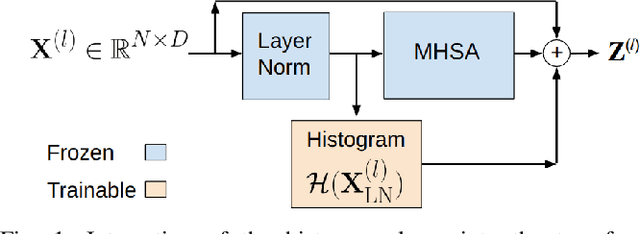
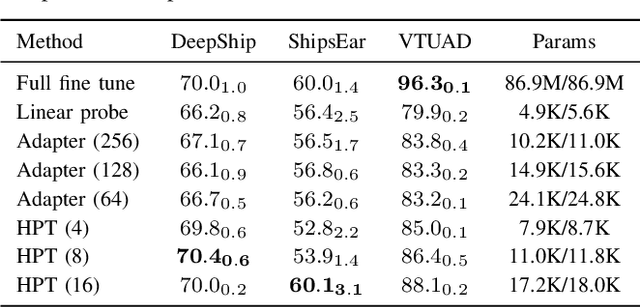
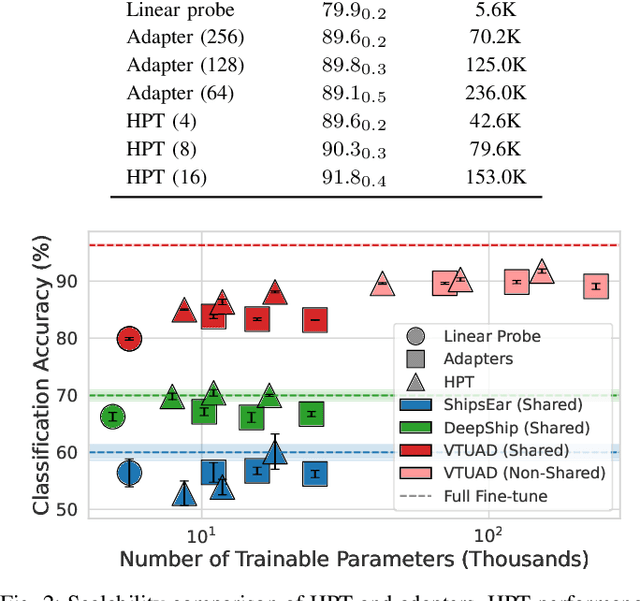
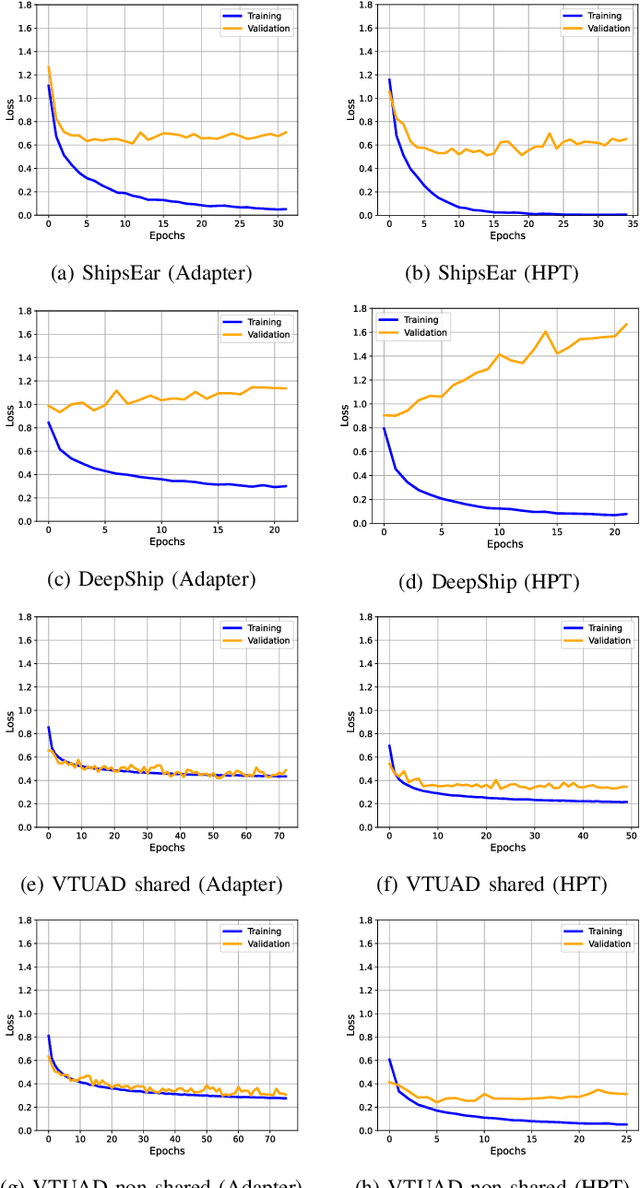
Abstract:Parameter-efficient transfer learning (PETL) methods adapt large artificial neural networks to downstream tasks without fine-tuning the entire model. However, existing additive methods, such as adapters, sometimes struggle to capture distributional shifts in intermediate feature embeddings. We propose a novel histogram-based parameter-efficient tuning (HPT) technique that captures the statistics of the target domain and modulates the embeddings. Experimental results on three downstream passive sonar datasets (ShipsEar, DeepShip, VTUAD) demonstrate that HPT outperforms conventional adapters. Notably, HPT achieves 91.8% vs. 89.8% accuracy on VTUAD. Furthermore, HPT trains faster and yields feature representations closer to those of fully fine-tuned models. Overall, HPT balances parameter savings and performance, providing a distribution-aware alternative to existing adapters and shows a promising direction for scalable transfer learning in resource-constrained environments. The code is publicly available: https://github.com/Advanced-Vision-and-Learning-Lab/HLAST_DeepShip_ParameterEfficient.
Quantitative Measures for Passive Sonar Texture Analysis
Apr 21, 2025Abstract:Passive sonar signals contain complex characteristics often arising from environmental noise, vessel machinery, and propagation effects. While convolutional neural networks (CNNs) perform well on passive sonar classification tasks, they can struggle with statistical variations that occur in the data. To investigate this limitation, synthetic underwater acoustic datasets are generated that centered on amplitude and period variations. Two metrics are proposed to quantify and validate these characteristics in the context of statistical and structural texture for passive sonar. These measures are applied to real-world passive sonar datasets to assess texture information in the signals and correlate the performances of the models. Results show that CNNs underperform on statistically textured signals, but incorporating explicit statistical texture modeling yields consistent improvements. These findings highlight the importance of quantifying texture information for passive sonar classification.
Benchmarking Suite for Synthetic Aperture Radar Imagery Anomaly Detection (SARIAD) Algorithms
Apr 10, 2025Abstract:Anomaly detection is a key research challenge in computer vision and machine learning with applications in many fields from quality control to radar imaging. In radar imaging, specifically synthetic aperture radar (SAR), anomaly detection can be used for the classification, detection, and segmentation of objects of interest. However, there is no method for developing and benchmarking these methods on SAR imagery. To address this issue, we introduce SAR imagery anomaly detection (SARIAD). In conjunction with Anomalib, a deep-learning library for anomaly detection, SARIAD provides a comprehensive suite of algorithms and datasets for assessing and developing anomaly detection approaches on SAR imagery. SARIAD specifically integrates multiple SAR datasets along with tools to effectively apply various anomaly detection algorithms to SAR imagery. Several anomaly detection metrics and visualizations are available. Overall, SARIAD acts as a central package for benchmarking SAR models and datasets to allow for reproducible research in the field of anomaly detection in SAR imagery. This package is publicly available: https://github.com/Advanced-Vision-and-Learning-Lab/SARIAD.
Patch distribution modeling framework adaptive cosine estimator (PaDiM-ACE) for anomaly detection and localization in synthetic aperture radar imagery
Apr 10, 2025Abstract:This work presents a new approach to anomaly detection and localization in synthetic aperture radar imagery (SAR), expanding upon the existing patch distribution modeling framework (PaDiM). We introduce the adaptive cosine estimator (ACE) detection statistic. PaDiM uses the Mahalanobis distance at inference, an unbounded metric. ACE instead uses the cosine similarity metric, providing bounded anomaly detection scores. The proposed method is evaluated across multiple SAR datasets, with performance metrics including the area under the receiver operating curve (AUROC) at the image and pixel level, aiming for increased performance in anomaly detection and localization of SAR imagery. The code is publicly available: https://github.com/Advanced-Vision-and-Learning-Lab/PaDiM-LACE.
Neural Edge Histogram Descriptors for Underwater Acoustic Target Recognition
Mar 17, 2025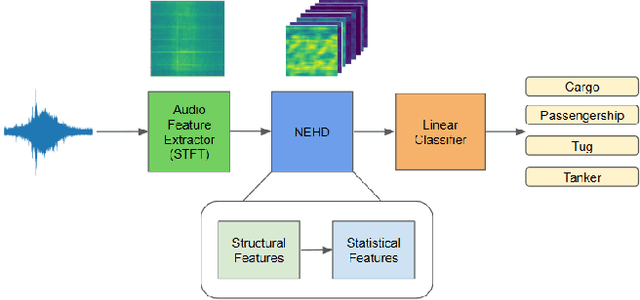
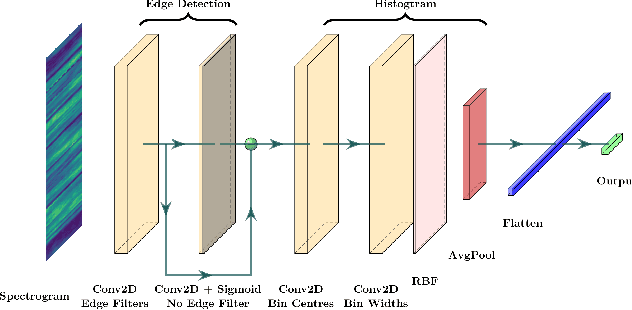

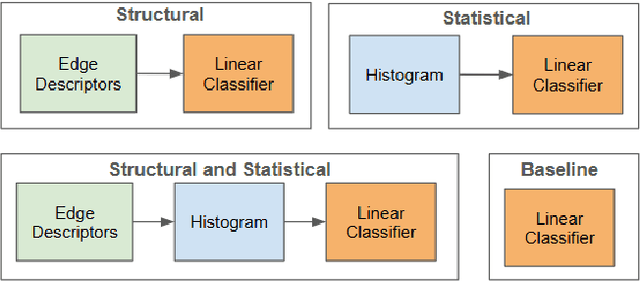
Abstract:Numerous maritime applications rely on the ability to recognize acoustic targets using passive sonar. While there is a growing reliance on pre-trained models for classification tasks, these models often require extensive computational resources and may not perform optimally when transferred to new domains due to dataset variations. To address these challenges, this work adapts the neural edge histogram descriptors (NEHD) method originally developed for image classification, to classify passive sonar signals. We conduct a comprehensive evaluation of statistical and structural texture features, demonstrating that their combination achieves competitive performance with large pre-trained models. The proposed NEHD-based approach offers a lightweight and efficient solution for underwater target recognition, significantly reducing computational costs while maintaining accuracy.
Structural and Statistical Audio Texture Knowledge Distillation (SSATKD) for Passive Sonar Classification
Jan 03, 2025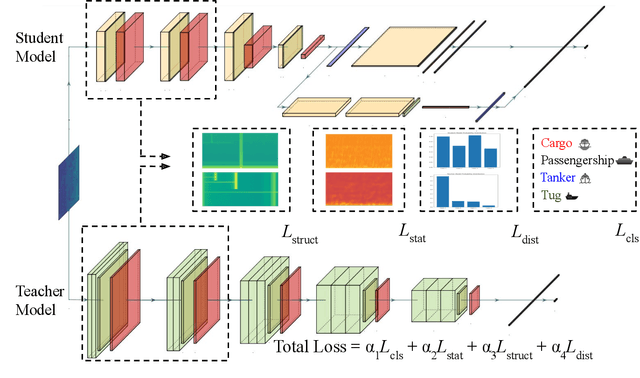
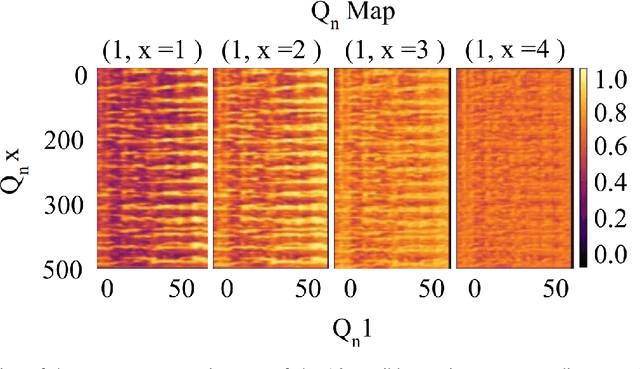
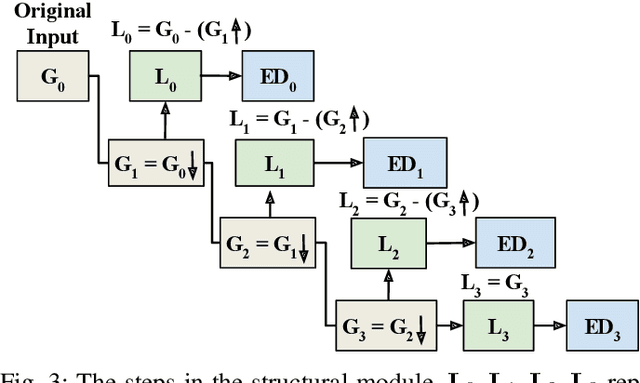
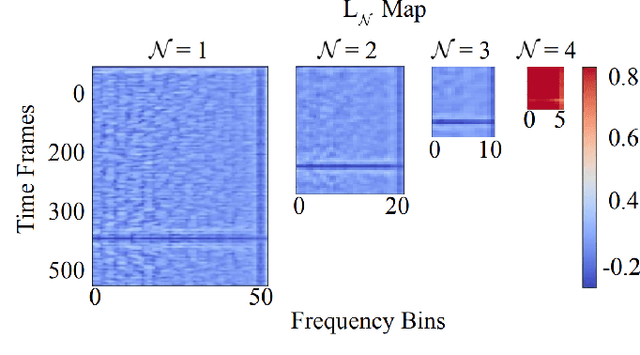
Abstract:Knowledge distillation has been successfully applied to various audio tasks, but its potential in underwater passive sonar target classification remains relatively unexplored. Existing methods often focus on high-level contextual information while overlooking essential low-level audio texture features needed to capture local patterns in sonar data. To address this gap, the Structural and Statistical Audio Texture Knowledge Distillation (SSATKD) framework is proposed for passive sonar target classification. SSATKD combines high-level contextual information with low-level audio textures by utilizing an Edge Detection Module for structural texture extraction and a Statistical Knowledge Extractor Module to capture signal variability and distribution. Experimental results confirm that SSATKD improves classification accuracy while optimizing memory and computational resources, making it well-suited for resource-constrained environments.
Transfer Learning for Passive Sonar Classification using Pre-trained Audio and ImageNet Models
Sep 20, 2024Abstract:Transfer learning is commonly employed to leverage large, pre-trained models and perform fine-tuning for downstream tasks. The most prevalent pre-trained models are initially trained using ImageNet. However, their ability to generalize can vary across different data modalities. This study compares pre-trained Audio Neural Networks (PANNs) and ImageNet pre-trained models within the context of underwater acoustic target recognition (UATR). It was observed that the ImageNet pre-trained models slightly out-perform pre-trained audio models in passive sonar classification. We also analyzed the impact of audio sampling rates for model pre-training and fine-tuning. This study contributes to transfer learning applications of UATR, illustrating the potential of pre-trained models to address limitations caused by scarce, labeled data in the UATR domain.
Investigation of Time-Frequency Feature Combinations with Histogram Layer Time Delay Neural Networks
Sep 20, 2024
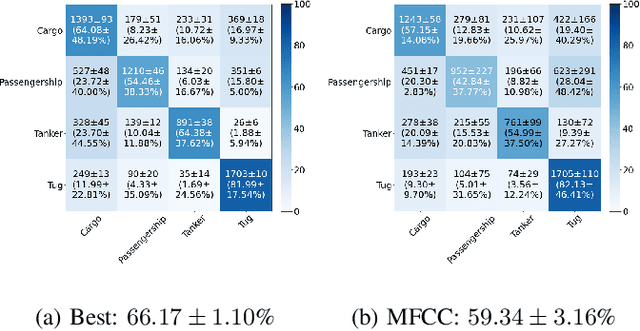
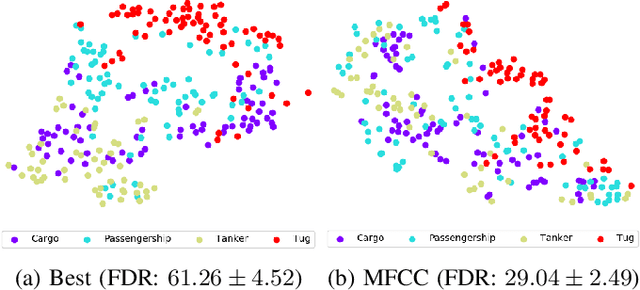
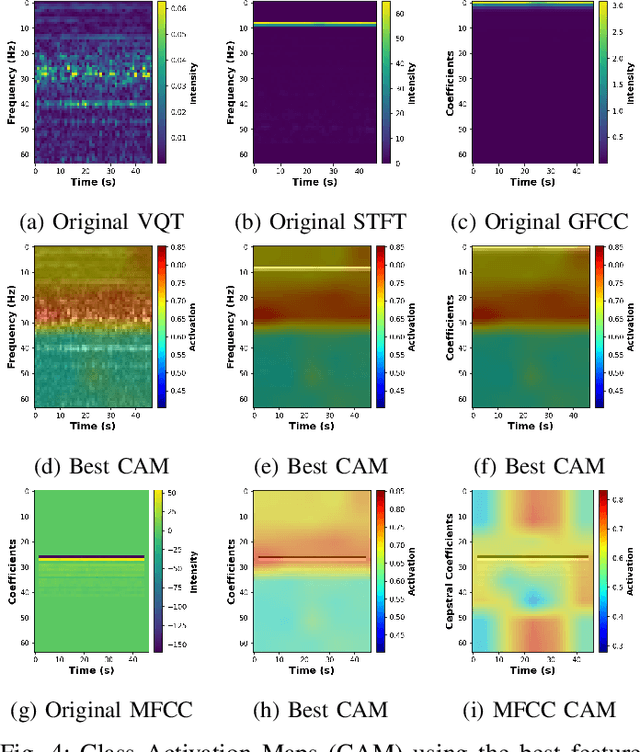
Abstract:While deep learning has reduced the prevalence of manual feature extraction, transformation of data via feature engineering remains essential for improving model performance, particularly for underwater acoustic signals. The methods by which audio signals are converted into time-frequency representations and the subsequent handling of these spectrograms can significantly impact performance. This work demonstrates the performance impact of using different combinations of time-frequency features in a histogram layer time delay neural network. An optimal set of features is identified with results indicating that specific feature combinations outperform single data features.
Spatial Transformer Network YOLO Model for Agricultural Object Detection
Jul 31, 2024
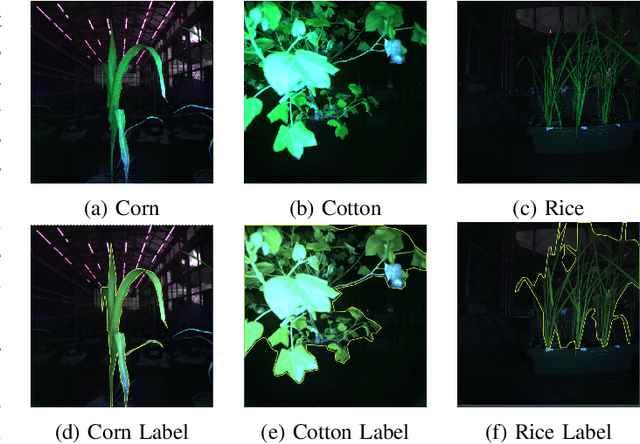
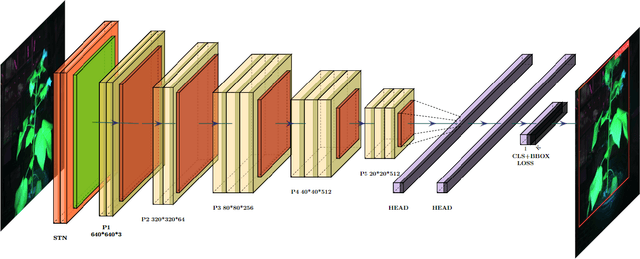

Abstract:Object detection plays a crucial role in the field of computer vision by autonomously identifying and locating objects of interest. The You Only Look Once (YOLO) model is an effective single-shot detector. However, YOLO faces challenges in cluttered or partially occluded scenes and can struggle with small, low-contrast objects. We propose a new method that integrates spatial transformer networks (STNs) into YOLO to improve performance. The proposed STN-YOLO aims to enhance the model's effectiveness by focusing on important areas of the image and improving the spatial invariance of the model before the detection process. Our proposed method improved object detection performance both qualitatively and quantitatively. We explore the impact of different localization networks within the STN module as well as the robustness of the model across different spatial transformations. We apply the STN-YOLO on benchmark datasets for Agricultural object detection as well as a new dataset from a state-of-the-art plant phenotyping greenhouse facility. Our code and dataset are publicly available.
Lacunarity Pooling Layers for Plant Image Classification using Texture Analysis
Apr 25, 2024

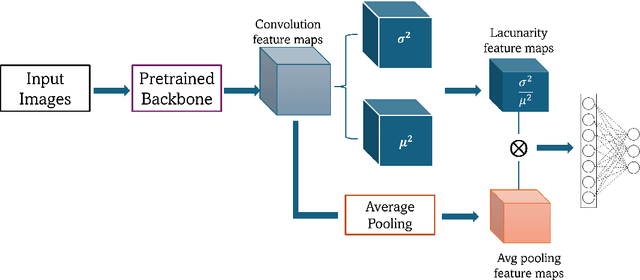

Abstract:Pooling layers (e.g., max and average) may overlook important information encoded in the spatial arrangement of pixel intensity and/or feature values. We propose a novel lacunarity pooling layer that aims to capture the spatial heterogeneity of the feature maps by evaluating the variability within local windows. The layer operates at multiple scales, allowing the network to adaptively learn hierarchical features. The lacunarity pooling layer can be seamlessly integrated into any artificial neural network architecture. Experimental results demonstrate the layer's effectiveness in capturing intricate spatial patterns, leading to improved feature extraction capabilities. The proposed approach holds promise in various domains, especially in agricultural image analysis tasks. This work contributes to the evolving landscape of artificial neural network architectures by introducing a novel pooling layer that enriches the representation of spatial features. Our code is publicly available.
 Add to Chrome
Add to Chrome Add to Firefox
Add to Firefox Add to Edge
Add to Edge